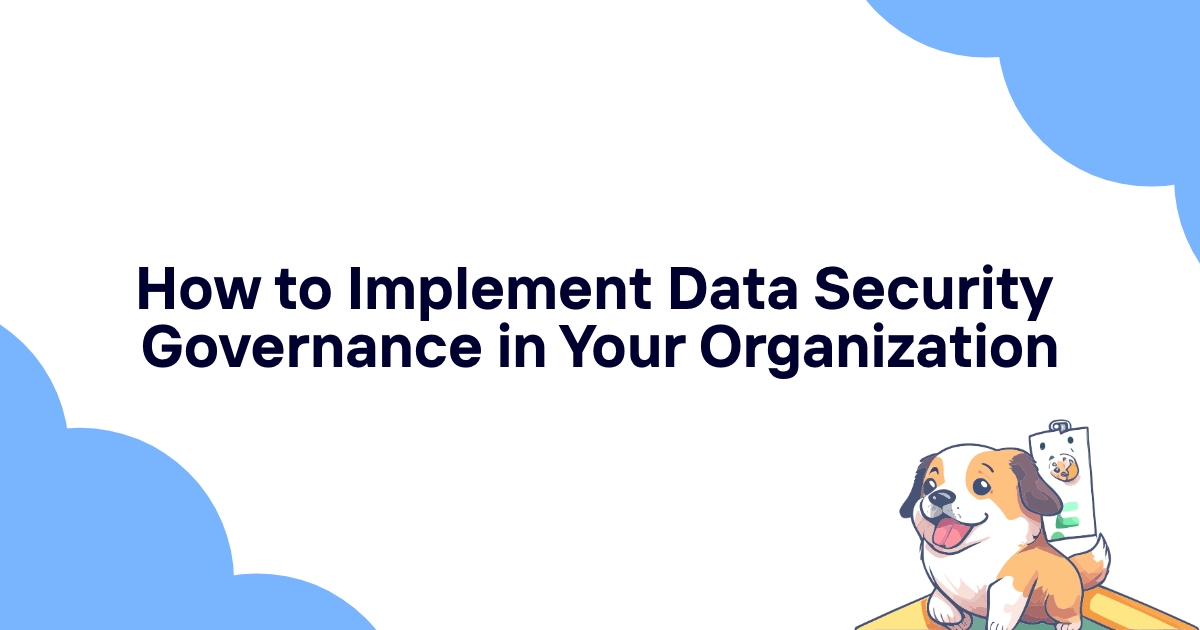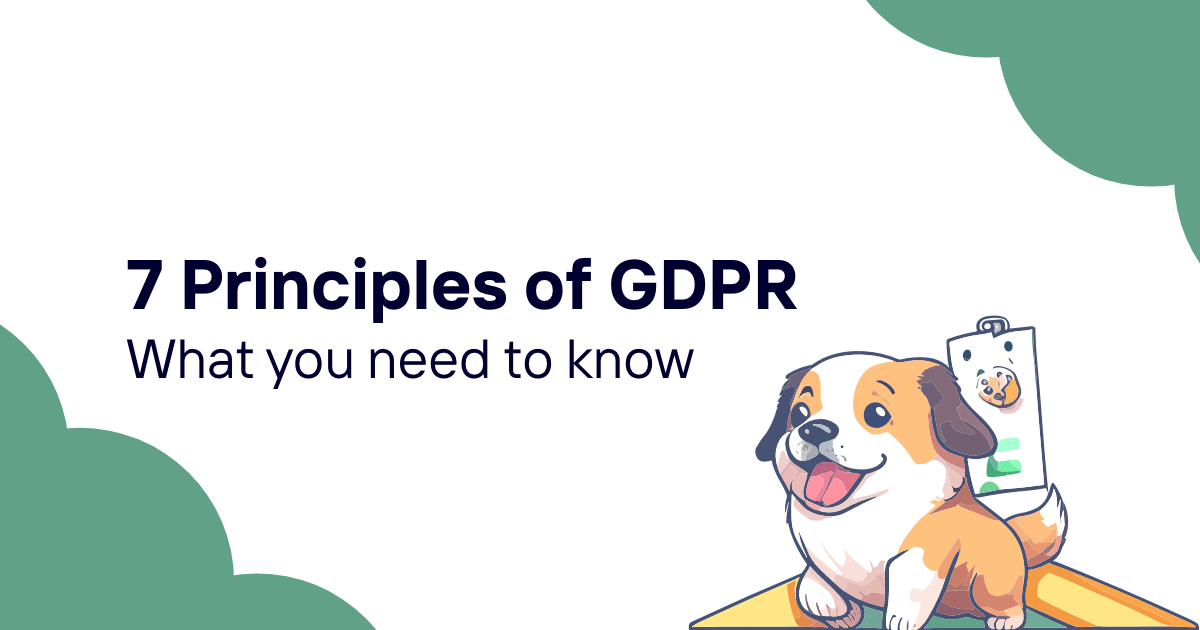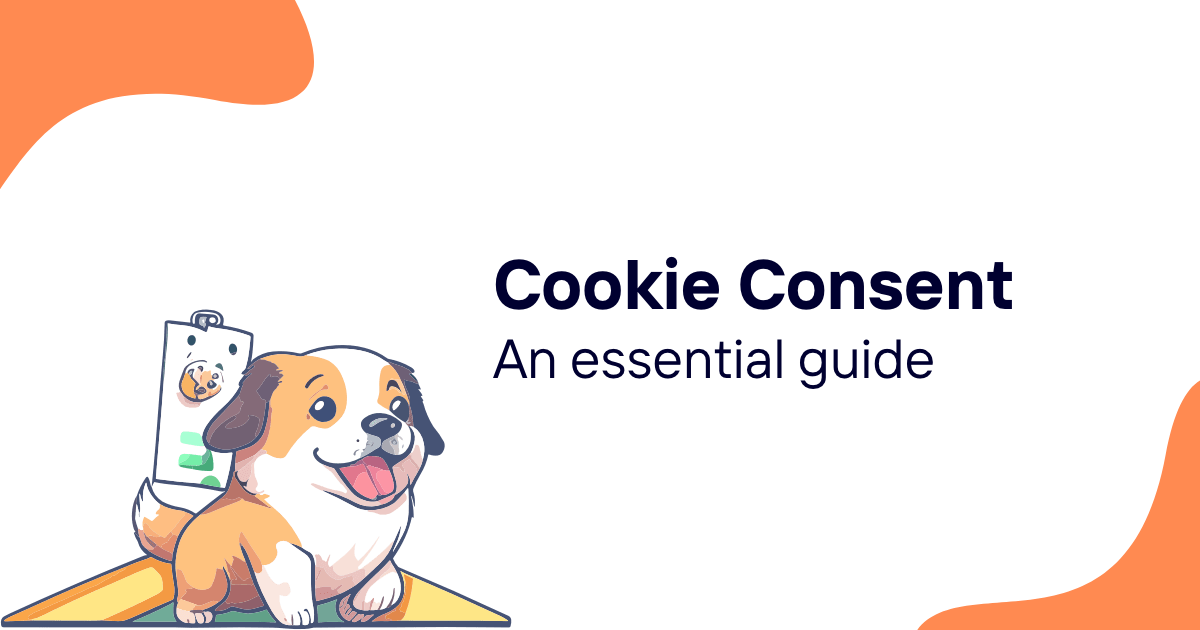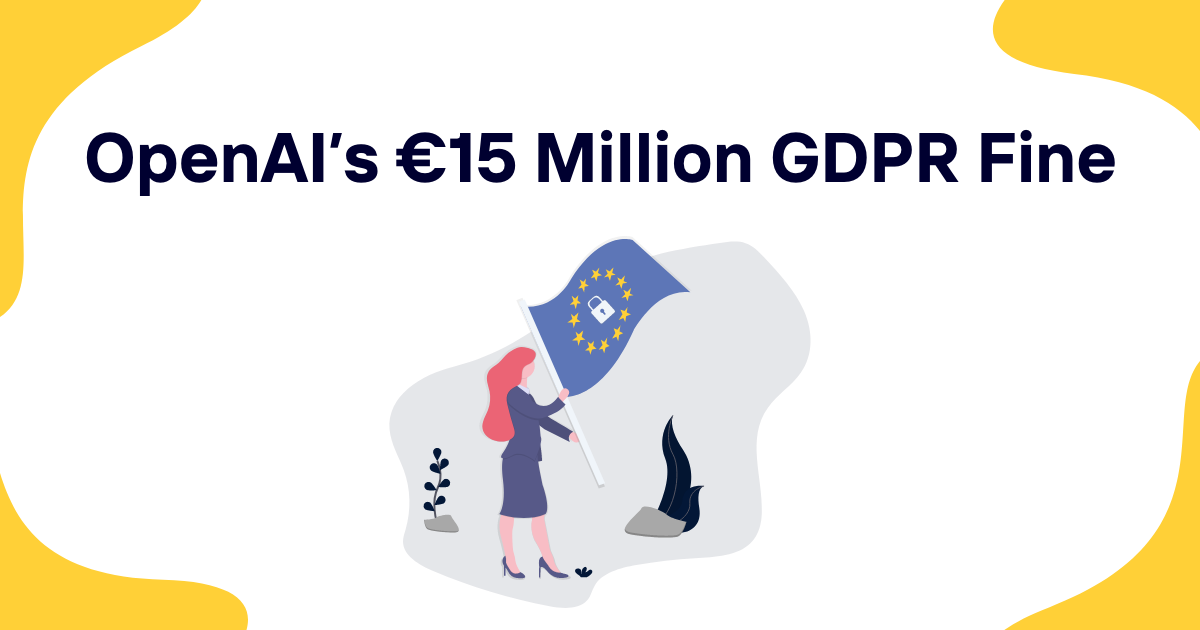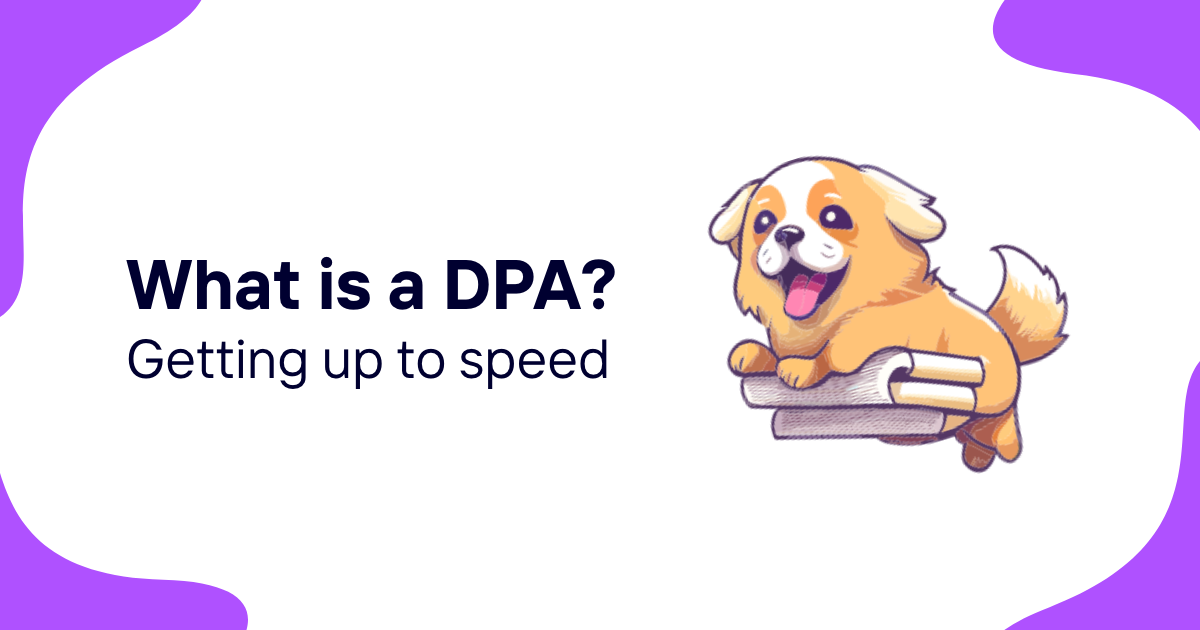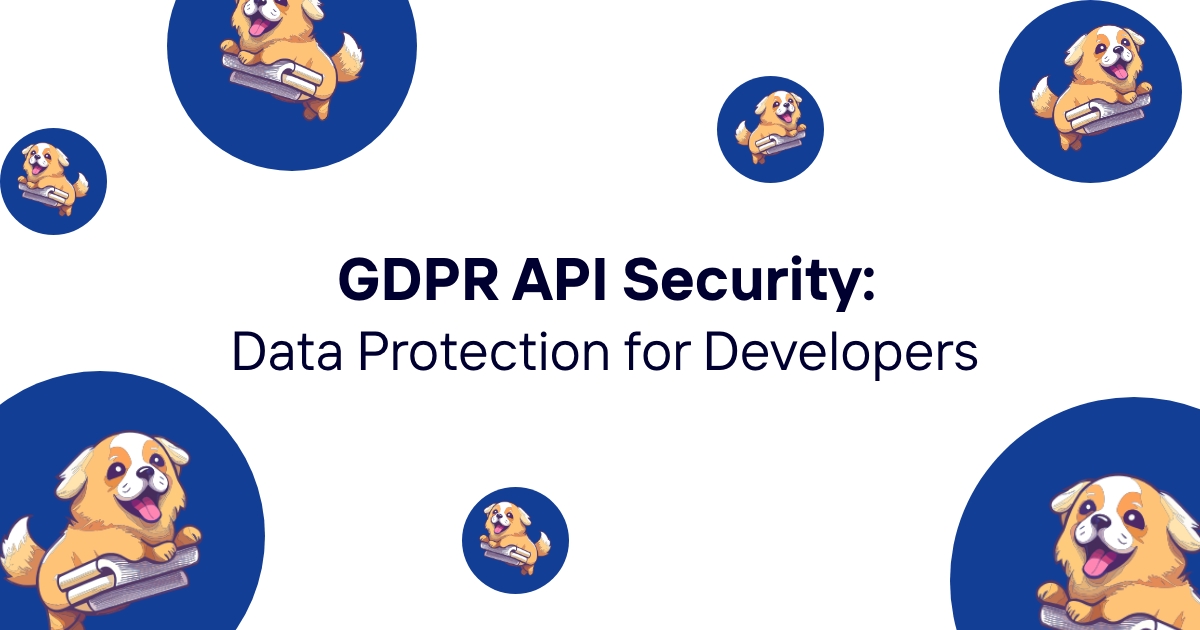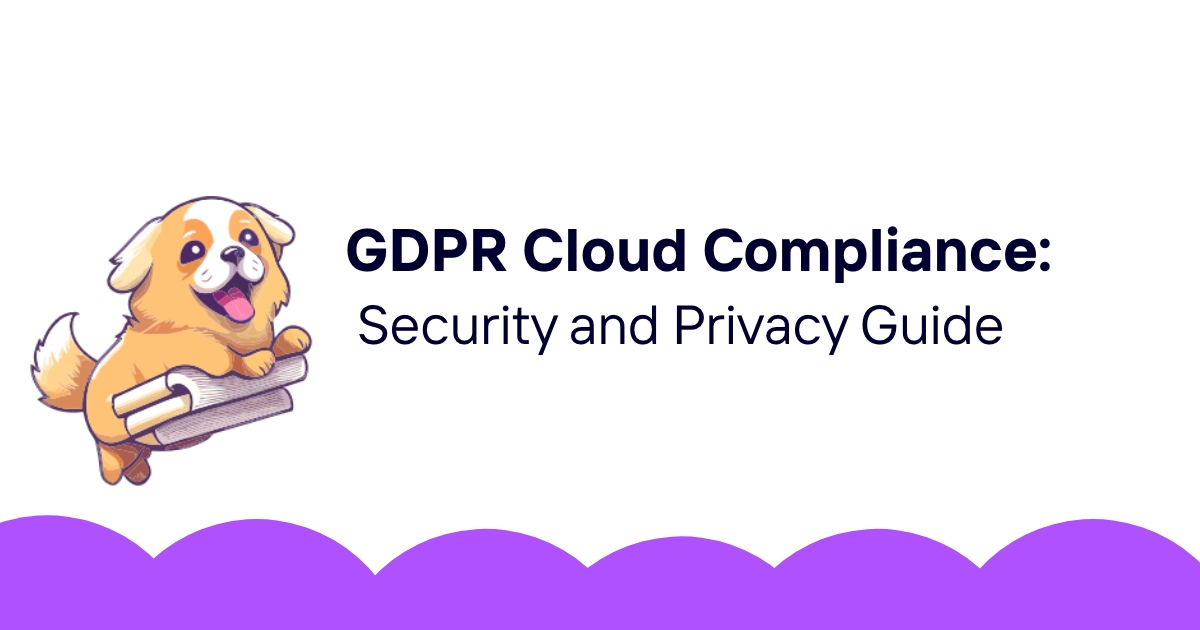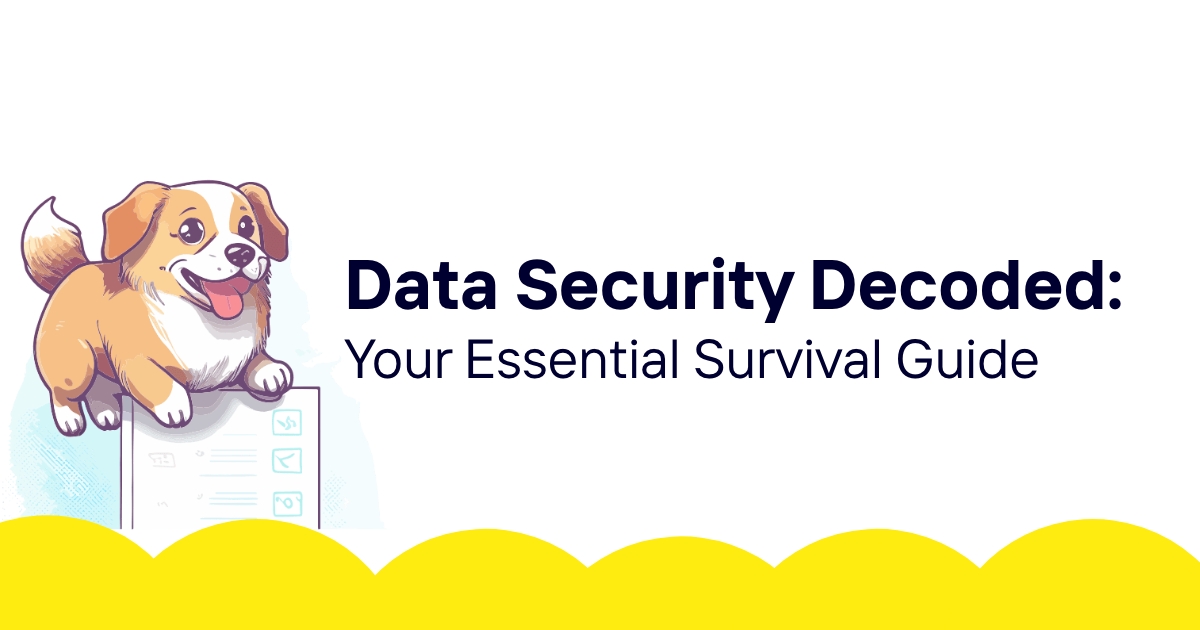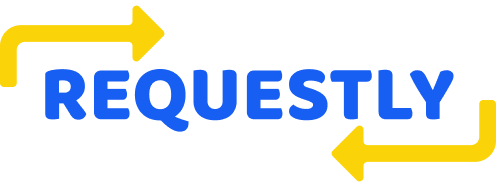Organizations today face an unprecedented challenge: how do you protect sensitive information while enabling business growth and innovation? The answer lies in establishing a comprehensive data security governance framework that balances protection with productivity.
Data breaches cost companies an average of $4.88 million per incident, yet many organizations still struggle with fragmented approaches to data protection. This disconnect between risk and response highlights why data security governance has become a critical business function rather than just an IT concern.
Think of data security governance as the architectural blueprint for your organization's data protection strategy. It's not just about installing security tools—it's about creating a systematic approach that defines how data should be handled, who has access to what, and how to maintain compliance across all business operations.
Table of contents
- What is data security governance?
- Core components of data security governance
- Data classification and inventory
- Access controls and identity management
- Risk assessment and management
- Compliance and regulatory alignment
- Technology infrastructure for data security governance
- Implementation strategies
- Measuring governance effectiveness
- Common challenges and solutions
- Future considerations
What is data security governance?
Data security governance represents a holistic approach to managing and protecting an organization's information assets throughout their entire lifecycle. Unlike traditional security measures that focus on preventing external threats, governance encompasses policies, procedures, and controls that address both internal and external risks while ensuring regulatory compliance.
This framework operates at multiple organizational levels. At the strategic level, it aligns data protection initiatives with business objectives and risk tolerance. Operationally, it defines day-to-day procedures for handling sensitive information. Technically, it specifies the tools and technologies needed to implement and monitor security controls.
The governance model establishes clear accountability structures. Data owners understand their responsibilities for information under their control. Data stewards implement protection measures and monitor compliance. Technical teams deploy and maintain security infrastructure. Executive leadership provides oversight and resources.
But here's where many organizations stumble—they treat data security governance as a checklist rather than a living system. Effective governance adapts to changing business needs, emerging threats, and evolving regulatory requirements. It's not something you implement once and forget about.
Core components of data security governance
A robust data security governance framework consists of several interconnected components that work together to protect information assets. Each component serves a specific purpose while contributing to the overall security posture.
Policy and standards framework
The policy framework forms the foundation of data security governance. These documents define what constitutes acceptable behavior regarding data handling, storage, and transmission. Policies should be clear, actionable, and aligned with business objectives.
Standards specify the technical requirements for implementing policies. They provide detailed guidance on encryption algorithms, access control mechanisms, and security monitoring procedures. Standards bridge the gap between high-level policy intentions and practical implementation.
Procedures translate standards into step-by-step instructions for specific tasks. They tell employees exactly how to handle common scenarios like onboarding new users, responding to security incidents, or conducting data retention activities.
Organizational structure and roles
Data security governance requires clearly defined roles and responsibilities. The organizational structure should include both strategic oversight and operational execution capabilities.
A data governance committee typically provides strategic direction and resolves policy conflicts. This group includes representatives from business units, IT, legal, and compliance functions. They make decisions about risk tolerance, resource allocation, and strategic priorities.
Data protection officers (DPOs) oversee compliance with privacy regulations and serve as the primary point of contact for data protection authorities. They conduct privacy impact assessments, provide training, and investigate potential violations.
Security teams implement technical controls and monitor for threats. They work closely with data stewards to understand business requirements and ensure security measures don't unnecessarily impede legitimate activities.
Training and awareness programs
Even the best policies fail without proper training and awareness. Organizations must invest in comprehensive education programs that help employees understand their data protection responsibilities.
Training programs should be role-specific and scenario-based. Marketing teams need different guidance than finance personnel. New employee orientation should include data protection basics, while specialized roles require more detailed instruction.
Regular awareness campaigns help maintain security consciousness throughout the organization. These might include phishing simulations, security newsletters, or lunch-and-learn sessions about emerging threats.
Data classification and inventory
You can't protect what you don't know you have. Data classification and inventory processes identify what information the organization collects, where it's stored, and how it should be protected.
Classification schemes categorize data based on sensitivity levels and regulatory requirements. Public information requires minimal protection, while highly confidential data needs strict access controls and encryption. Most organizations use three to five classification levels to balance granularity with practicality.
The classification process considers multiple factors. Regulatory requirements often drive baseline protection levels. Business impact assessments determine additional controls needed to protect competitive advantages or prevent operational disruption. Risk assessments identify potential threats and vulnerabilities.
Automated discovery tools scan networks, databases, and file systems to locate sensitive information. These tools use pattern recognition to identify credit card numbers, social security numbers, and other regulated data types. But automation has limits—contextual understanding often requires human judgment.
Regular inventory updates maintain accuracy as data landscapes evolve. New applications, cloud migrations, and business process changes all affect data locations and protection requirements. Quarterly reviews help organizations stay current with their information assets.
Access controls and identity management
Access controls ensure that only authorized individuals can view, modify, or delete sensitive information. Effective identity and access management (IAM) systems implement the principle of least privilege—users receive the minimum access necessary to perform their job functions.
Role-based access control (RBAC) simplifies permission management by grouping users with similar responsibilities. Marketing staff receive access to customer contact information but not financial records. Finance personnel can view payment data but not employee health records.
Attribute-based access control (ABAC) provides more granular control by considering multiple factors when making access decisions. Location, time of day, device type, and data sensitivity all influence whether access should be granted.
Multi-factor authentication adds another layer of security by requiring something the user knows (password), something they have (token), or something they are (biometric). This significantly reduces the risk of unauthorized access even if passwords are compromised.
Regular access reviews ensure that permissions remain appropriate as roles change. Automated workflows can trigger reviews when employees transfer departments, receive promotions, or leave the organization. Annual certifications help identify and remove unnecessary access rights.
Risk assessment and management
Risk management provides the analytical foundation for data security governance decisions. Organizations must identify potential threats, assess their likelihood and impact, and implement appropriate controls to manage residual risk.
Threat modeling examines how adversaries might attack the organization's data assets. External threats include cybercriminals, nation-states, and competitor espionage. Internal threats range from malicious insiders to well-meaning employees who make mistakes.
Vulnerability assessments identify weaknesses in systems, processes, and controls that could be exploited by threat actors. Technical vulnerabilities might include unpatched software or misconfigured databases. Process vulnerabilities could involve inadequate segregation of duties or insufficient monitoring.
Risk quantification helps prioritize mitigation efforts by estimating potential financial losses. While precise calculations are difficult, even rough estimates help organizations allocate resources more effectively. High-probability, high-impact scenarios deserve immediate attention.
Risk treatment strategies include:
- Risk avoidance: Eliminating activities that create unacceptable risk
- Risk mitigation: Implementing controls to reduce likelihood or impact
- Risk transfer: Using insurance or contracts to shift liability
- Risk acceptance: Acknowledging residual risk levels
Compliance and regulatory alignment
Data security governance must address an increasingly complex regulatory landscape. Organizations often face multiple overlapping requirements from different jurisdictions and industry sectors.
GDPR affects any organization that processes personal data of EU residents, regardless of the organization's location. The regulation requires data protection by design and by default, meaning security considerations must be built into systems and processes from the beginning.
HIPAA governs healthcare information in the United States. It requires administrative, physical, and technical safeguards to protect patient data. Business associate agreements extend these requirements to third-party service providers.
CCPA and other state privacy laws create additional compliance obligations for organizations serving California residents. These laws emphasize consumer rights, including the right to know what personal information is collected and the right to delete that information.
Industry-specific regulations add another layer of complexity. Payment card industry (PCI) standards govern credit card processing. Financial services face regulations from multiple agencies. Government contractors must comply with cybersecurity frameworks like NIST 800-53.
Cross-border data transfers require special attention. Adequacy decisions, standard contractual clauses, and binding corporate rules provide mechanisms for lawful international data sharing. Privacy shield frameworks have evolved significantly, requiring ongoing attention to changing requirements.
Technology infrastructure for data security governance
Technology serves as the backbone of modern data security governance, providing the tools and platforms needed to implement, monitor, and maintain protection controls.
Data loss prevention (DLP) systems monitor data in motion, at rest, and in use. They can detect attempts to exfiltrate sensitive information via email, web uploads, or removable storage devices. Advanced DLP solutions use machine learning to identify unusual data access patterns.
Encryption protects data confidentiality by rendering information unreadable without proper decryption keys. Encryption at rest protects stored data, while encryption in transit secures data during transmission. Key management systems ensure that encryption keys themselves remain protected.
Security information and event management (SIEM) platforms collect and analyze log data from across the organization's technology infrastructure. They correlate events to identify potential security incidents and provide centralized monitoring capabilities.
Data governance platforms provide centralized visibility into data assets, lineage, and usage patterns. They help organizations understand where sensitive data resides and how it flows through various systems and processes.
Cloud security tools address the unique challenges of hybrid and multi-cloud environments. Cloud access security brokers (CASBs) provide visibility and control over cloud application usage. Cloud workload protection platforms secure virtual machines and containers.
Implementation strategies
Successful data security governance implementation requires careful planning and phased execution. Organizations should start with foundational elements before adding more sophisticated capabilities.
The first phase typically focuses on policy development and organizational structure. Clear policies provide the framework for all subsequent activities. Establishing governance committees and assigning data stewardship roles creates accountability structures.
Data discovery and classification form the second phase. Organizations need to understand their information assets before they can protect them effectively. Automated tools can accelerate this process, but human expertise remains necessary for contextual understanding.
Technical implementation often proceeds in parallel with organizational changes. Basic security controls like access management and encryption should be prioritized. More advanced capabilities like behavioral analytics can be added later.
Change management deserves special attention during implementation. Data security governance affects how people work, and resistance is common. Clear communication about benefits, comprehensive training programs, and gradual rollouts help ensure adoption.
Pilot programs allow organizations to test governance processes on a limited scale before enterprise-wide deployment. Choose pilot areas that are important enough to provide meaningful feedback but not so critical that problems would cause serious business disruption.
Measuring governance effectiveness
Metrics and key performance indicators (KPIs) help organizations assess the effectiveness of their data security governance programs and identify areas for improvement.
Leading indicators predict potential problems before they occur. High numbers of policy violations, increasing privileged access accounts, or growing backlogs of access reviews suggest governance processes may be breaking down.
Lagging indicators measure actual outcomes. Security incident frequency and severity indicate whether controls are working effectively. Compliance audit results show how well the organization meets regulatory requirements.
The following table outlines key metrics for different aspects of data security governance:
| Category | Leading Indicators | Lagging Indicators |
|---|---|---|
| Policy Compliance | Policy exception requests, Training completion rates | Audit findings, Regulatory violations |
| Access Management | Access review completion, Dormant account percentages | Inappropriate access incidents, Identity-related breaches |
| Data Protection | Classification coverage, Encryption deployment | Data breach incidents, Regulatory fines |
| Risk Management | Risk assessment frequency, Control gaps identified | Security incidents, Financial losses |
Regular reporting keeps stakeholders informed about governance program performance. Executive dashboards should focus on strategic metrics and trend analysis. Operational reports provide detailed information for day-to-day management.
Benchmarking against industry peers provides context for performance metrics. While absolute numbers vary between organizations, relative performance can highlight strengths and weaknesses.
Common challenges and solutions
Data security governance implementation faces predictable challenges. Understanding these obstacles and proven solutions helps organizations avoid common pitfalls.
Siloed organizational structures create coordination difficulties. Different departments may have conflicting priorities or duplicate efforts. Solution: Establish cross-functional governance committees with clear decision-making authority and communication protocols.
Legacy systems often lack modern security controls and integration capabilities. Complete replacement is expensive and risky. Solution: Implement compensating controls like network segmentation, enhanced monitoring, and strict access policies while planning systematic modernization.
Resource constraints limit the scope and pace of governance initiatives. Organizations must balance perfect security with practical limitations. Solution: Prioritize high-risk areas and implement phased approaches that deliver incremental value.
Cultural resistance emerges when security controls interfere with established work patterns. Users may circumvent controls they perceive as burdensome. Solution: Involve business stakeholders in design decisions and emphasize security as an enabler rather than a barrier.
Regulatory complexity overwhelms organizations subject to multiple, overlapping requirements. Different regulations may have conflicting requirements or ambiguous language. Solution: Focus on common denominators and implement comprehensive controls that address multiple regulations simultaneously.
Technology integration challenges arise when security tools don't work well together. Data silos and incompatible formats impede comprehensive monitoring. Solution: Prioritize platforms with robust APIs and integration capabilities. Consider vendor consolidation to reduce complexity.
Future considerations
Data security governance must evolve to address emerging technologies, changing threat landscapes, and evolving regulatory requirements.
Artificial intelligence and machine learning create new opportunities and risks. AI can enhance threat detection and automate routine governance tasks. But AI systems themselves require governance to ensure they operate fairly and securely.
Cloud adoption continues accelerating, requiring governance frameworks that span on-premises and cloud environments. Hybrid architectures complicate data lineage tracking and access control implementation.
Remote work has become permanent for many organizations, expanding the security perimeter beyond traditional network boundaries. Zero-trust architectures and cloud-based security controls become more important.
Privacy regulations continue expanding globally. Organizations must monitor regulatory developments and adapt governance frameworks accordingly. Automated compliance monitoring becomes increasingly valuable.
Quantum computing threatens current encryption methods while promising more powerful security capabilities. Organizations should begin planning for post-quantum cryptography transitions.
Internet of Things (IoT) devices generate massive amounts of potentially sensitive data. Governance frameworks must address device management, data collection practices, and edge computing security.
The growing importance of data security governance reflects the increasing value and risk associated with organizational data assets. Organizations that invest in comprehensive governance frameworks position themselves for sustainable growth while minimizing regulatory and reputational risks.
Implementing effective data security governance requires commitment from leadership, collaboration across organizational boundaries, and ongoing investment in people, processes, and technology. The complexity can seem overwhelming, but the consequences of inadequate governance are far worse than the challenges of implementation.
Modern compliance platforms simplify data security governance by providing integrated tools for policy management, risk assessment, and regulatory compliance. ComplyDog offers a comprehensive GDPR compliance solution that helps organizations establish robust governance frameworks, automate compliance monitoring, and demonstrate regulatory adherence. By centralizing governance activities and providing clear visibility into data protection practices, specialized compliance software enables organizations to build and maintain effective data security governance programs while focusing on their core business objectives.
